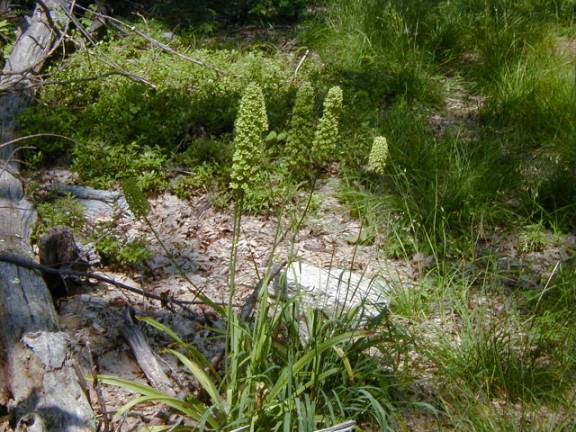|
Common Name: Fly Poison Scientific Name: Amianthium muscaetoxicum Family: Lily Liliaceae The tall stalks of the Fly Poison plant are very common along the trail in June and July, particularly at elevations of about 1000 to 3000 feet. Small white flowers that are initially white, but then turn to green and eventually purple as they age characterize the plant. Potpourri: The name fly poison is not a coincidence. The entire plant , but most especially the bulbs, contain a poisonous alkaloid. In colonial times, the alkaloid poisons from the plant were ground into a paste and mixed with sugar to kill flies. As with many modern chemical pesticides, the sugar would attract the fly that would then be poisoned by the plant derivative. The lily family is a large group that generally consist of 3 petals, 3 sepals (the leaves at the base of the flower) , 6 stamens (the pollen bearing male part of the flower) and a long pistil (the egg bearing female part of the flower). As with most plants of the lily family, the Fly Poison is a perennial that survives the winter as a bulb. |
